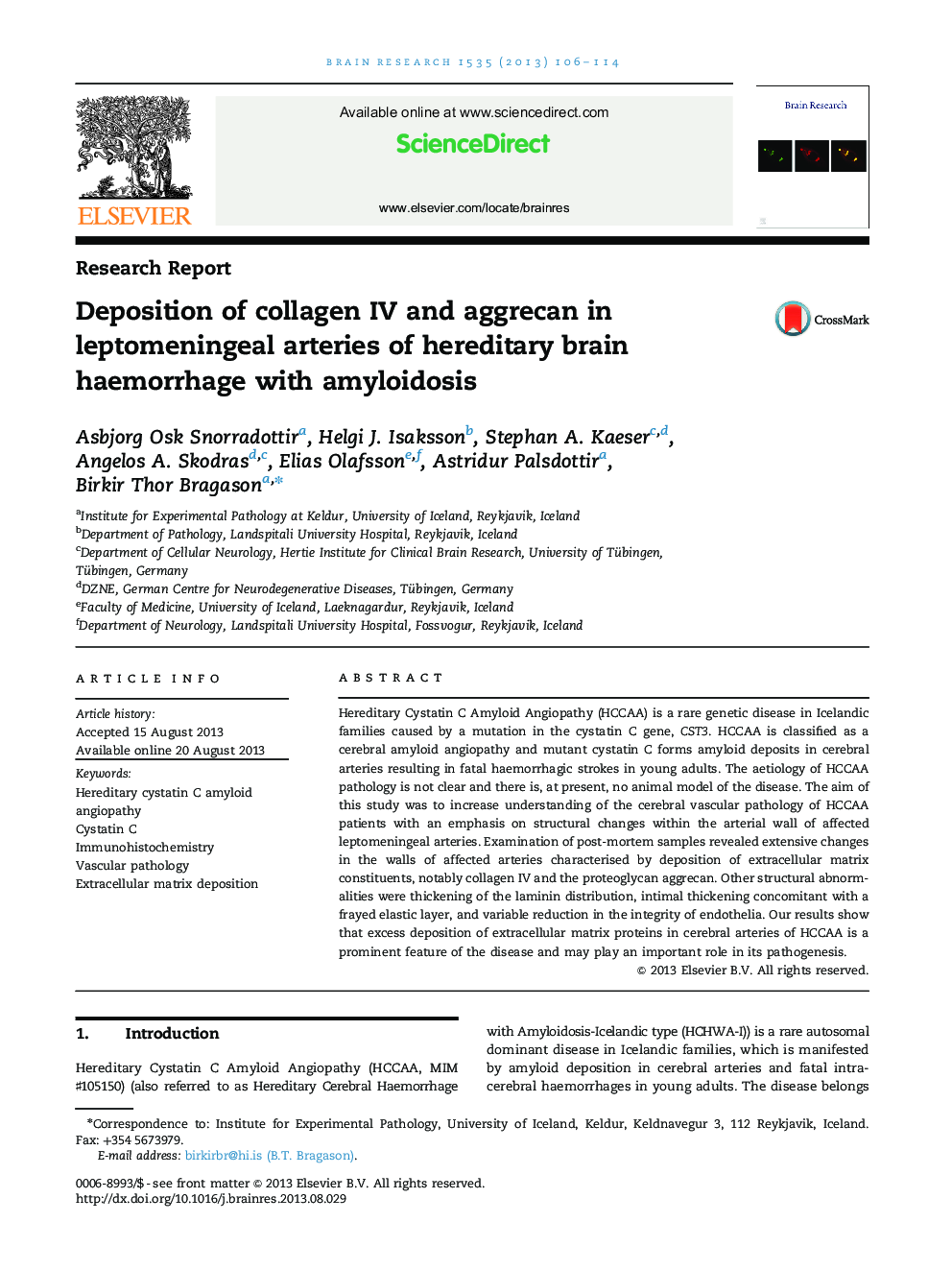| Article ID | Journal | Published Year | Pages | File Type |
|---|---|---|---|---|
| 6263635 | Brain Research | 2013 | 9 Pages |
â¢This is a study of the pathology of leptomeningeal arteries in HCCAA.â¢The pathological characteristics overlap in several aspects with other CAA disorders.â¢There was extensive deposition of COLIV and AGC1 throughout the vascular wall.
Hereditary Cystatin C Amyloid Angiopathy (HCCAA) is a rare genetic disease in Icelandic families caused by a mutation in the cystatin C gene, CST3. HCCAA is classified as a cerebral amyloid angiopathy and mutant cystatin C forms amyloid deposits in cerebral arteries resulting in fatal haemorrhagic strokes in young adults. The aetiology of HCCAA pathology is not clear and there is, at present, no animal model of the disease. The aim of this study was to increase understanding of the cerebral vascular pathology of HCCAA patients with an emphasis on structural changes within the arterial wall of affected leptomeningeal arteries. Examination of post-mortem samples revealed extensive changes in the walls of affected arteries characterised by deposition of extracellular matrix constituents, notably collagen IV and the proteoglycan aggrecan. Other structural abnormalities were thickening of the laminin distribution, intimal thickening concomitant with a frayed elastic layer, and variable reduction in the integrity of endothelia. Our results show that excess deposition of extracellular matrix proteins in cerebral arteries of HCCAA is a prominent feature of the disease and may play an important role in its pathogenesis.
